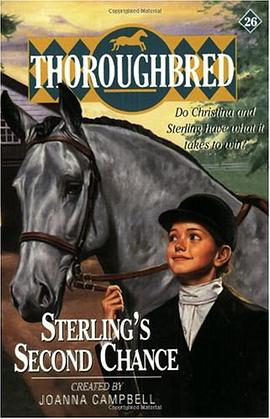Contents
Introduction
1.Beginning at the eod
1.1 What is software engineering?
1.2 Engineering quality software
1.3 But hang on a minute
1.4 A thought experiment
1.5 Quality software in the real world
1.6 An offer you can't refuse
1.7 Why use C++?
1.8 SADIE and quality software
1.9 SADIE and CASE tools
1.10 Beginning at the end
1.11 Conclusions
2.Lelcxster Softwre Engineering
2.1 Introduction
2.2 LSE company structure
2.3 A typical scenario
2.4 A more realistic software devclopmcnt model
2.5 Threc different system types
2.6 LSE and SADIE
2.7 One mcthodology, three different methods
2.8 Conclusions
Excrcises
3.Goodbye, cruel worid!
3.1 Introduction
3.2 TheoriginsofC++
3.3 A first C++ program
3.4 Variable types and declarations
3.5 Manipulating data: some basic operators
3.6 Input and output
3.7 More on the declaration of variables
3.8 Conclusions
Exerciscs
4.Taking control
4.1 Introduction
4.2 Some important operators
4.3 Iteration
4.4 Selection statements
4.5 Advanced operators
4.6 Conclusions
Exercises
1 Process-oriented software deyelopment
5. Case study: Harry Hacker (Programmlng) Ltd
5.1 Introduction
5.2 Thc scenario
5.3 You need to use functions
5.4 Conclusions
6.Writing C++ functions
6.1 Introduction
6.2 Anotherlookatmain
6.3 A first simple function: Sadie
6.4 Declaration vs definition revisited
6.5 Calling a simple function
6.6 Call by value
6.7 Local and global scope
6.8 CaU by reference
6.9 ASIOE: Scope rules and storage ctass
6.10 Detecting and correcting errors
6.11 Using the consc modifier
6.12 Conclusions
Exercises
7.Pointers and arrays
7.1 Introduction
7.2 Memory ofganization
7.3 Assigning values to variables
7.4 Pointers
7.5 Arrays
7.6 Pointers and arrays
7.7 Strings
7.8 More advanced pointer topics
7.9 Conclusions
Exercises
8.closer look at functions
8.1 Introduction
8.2 Call by address
8.3 More on the const modifier
8.4 Arrays as function parameters
8.5 Retuming values from functions
8.6 Example: On strings, constants and functions
8.7 Macros and inline functions
8.8 Recursion
8.9 Flexible functions
8.10 Conclusions
Exercises
9.The standard Hbraries
9.1 Introduction
9.2 Pragmatics
9.3 Character and string handling
9.4 Mathematical functions
9.5 Graphics functions
9.6 Sorting and searching
9.7 Time and date functions
9.8 Abandoning the sinking ship
9.9 Interrupts
9.10 Conclosions
Exercises
10.The physical process model
10.1 Introduction
10.2 Structure charts
10.3 Process specifications
10.4 An altemative structure chart notation
10.5 Conclusions
Exercises
11.Implementation of the physkal process model
11.1 Introduction
11.2 Therecipe
11.3 The starting point
11.4 Building the system code framework
11.5 Creating robust functions
11.6 Fundamentals of testing
11.7 Using driver programs
11.8 Fieldtrials
11.9 Conclusions
Exercises
12.Process-oriented analysis
12.1 Introduction
12.2 Requirements analysis
12.3 The dataflow diagram
12.4 The DfD hierarehy
12.5 The process specification
12.6 The data dictionary
12.7 Balancing the system
12.8 Documentation
12.9 Conclusions
Exercises
13.Case study: Loughborough Bell Foundry
13.1 Introduction
13.2 Scenario
13.3 Overview of the analysis process
13.4 The business case
13.5 The Context diagram
13.6 The User interface
13.7 The process list
13.8 The walkthrough
13.9 The Level 1 dataflow diagram
13.10 The dataflow diagram hierarchy
13.11 The process specifications
13.12 The data dictionary
13.13 The balanced logical model
13.14 Conclusions
14.Process-oriented analysis of interactive systems
14.1 Introduction
14.2 State-transition diagrams
14.3 Control processes
14.4 The impact of the user interface
14.5 Relating STDs to C++ code
14.6 Some new guidelines
14.7 Conclusions
Exercises
15.Process-oriented design
15.1 Introduction
15.2 Review and refinement of the logical model
15.3 The software and hardware architecture
15.4 The physical process model
15.5 Review and refinement of the physical model
15.6 Reconciling the physical and logical models
15.7 Theteststrategy
15.8 Conclusions
Exercises
16.Case study: Birstall Bank
16.1 Introduction
16.2 Scenario
16.3 Analysis
16.4 Design
16.5 Implementation
16.6 Conclusions
Part 11 Data-oriented software development
17. Implementing isolated data in C++
17.1 Introduction
17.2 Creating new data types with structs
17.3 Creating struct variables
17.4 Accessing elements of struc variables
17.5 unions
17.6 Creating enumerated types
17.7 Example: A simple payroll program
17.8 A rose by any other name ...
17.9 Conclusions
Exercises
18.Dynamic memory allocation
18.1 Introduction
18.2 Simple dynamic memory allocation
18.3 Dynamic arrays
18.4 More complex data structures
18.5 Conclusions
Exercises
19.Saving data for posterity
19.1 Introduction
19.2 File access fundamentals
19.3 Opening and closing files
19.4 Sequential file access
19.5 Direct file access
19.6 Conclusions
Exercises
20.The relational database
20.1 Introduction
20.2 Fundamentals of database systems
20.3 Why use a relational data model?
20.4 Data normalization issues
20.5 Relationships between tables
20.6 Implementation of RDBs
20.7 Other types of database
20.8 Conclusions
Exercises
21.Entity-relationship diagrams
21.1 Introduction
21.2 Modelling general associations
21.3 Using attribute diagrams
21.4 How to create ERDs
21.5 Implementating from ERDs
21.6 Aggregation relationships
21.7 Conclusions
Exereises
22.Data-oriented analysis and design
22.1 Introduction
22.2 The analysis phase
22.3 Integration of process and data models
22.4 Decision support systems
22.5 The design phase
22.6 Data normalization and speed of data access
22.7 The implementation phase
22.8 Conclusions
Exercises
23.Case study: Laughing House
23.1 Introduction
23.2 Scenario
23.3 Analysis
23.4 Press cutting
23.5 Design
23.6 Implementation
23.7 Conclusions
Part 11 Object-oriented software development
24.Why we need objects
24.1 Introduction
24.2 A thought experiment revisited
24.3 Encapsulation
24.4 Polymorphism
24.5 Inheritance
24.6 Classes for courses
24.7 Conclusions
Exercises
25.Encapsulation
25.1 Introduction
25.2 Constructor functions
25.3 Being destructive
25.4 Functions, objects and copies
25.5 Copy constructors
25.6 Example: A new array type
25.7 Dealing with errors
25.8 Guidelines
25.9 Conclusions
Exercises
26.A flrst look at class relationships
26.1 Introduction
26.2 Aggregations (APO relationships)
26.3 Associations (NTKA relationships)
26.4 Relationships between objects
26.5 Conclusions
Exercises
27.Polymorphism
27.1 Introduction
27.2 The this pointer
27.3 Overioading binary operators
27.4 Copy constructors vs assignment
27.5 Overloading unary operators
27.6 Using friend functions for operator overloading
27.7 Guidelines
27.8 Conclusions
Exercises
28.Generic programming
28.1 Introduction
28.2 Generic functions
28.3 Generic classes
28.4 Guidelines
28.5 Conclusions
Exercises
29.Inheritance
29.1 Introduction
29.2 Single inheritance
29.3 Multiple inheritance
29.4 Virtual functions, pointers and polymorphism
29.5 Pure virtual functions
29.6 Guidelines
29.7 Conclusions
Exercises
30.Class-relationship diagrams
30.1 Introduction
30.2 Entities vs classes
30.3 Class-relationship diagrams
30.4 Identifying appropriate classes
30.5 Conclusions
Exercises
31.Object-oriented SADIE
31.1 Introduction
31.2 Why CRDs are not enough
31.3 Building the object model
31.4 The components of the object model
31.5 Implementing the object model
31.6 Testing object-oriented systems
31.7 A recipe for success
31.8 Conclusions
31.9 Appendix: Source code for mailing list
Exercises
32.Case study: BirstaU Bank revisited
32.1 Introduction
32.2 Scenario
32.3 Developing the object model
32.4 Implementation of the class model
32.5 Conclusions
Conclusions
33.EHding at the beginning
33.1 Introduction
33.2 Which method should you use?
33.3 Varying and mixing the recipes
33.4 Conclusions
34.Bibliography
Appendices
A CASE tool: Installation
B CASE tool: Managing a project
C CASE tool: Installing the sample projects
D CASE tutorial: General introduction
E CASE tutorial: Dataflow diagrams
F CASE lutorial: Data dictionary
G CASE tutorial: Process specifications
H CASE tutorial: State transition diagrams
1 CASE tutorial: Structure charts
J CASE tutorial: Entity-relationship diagrams and
class-relationship diagrams
Index
· · · · · · (
收起)






















